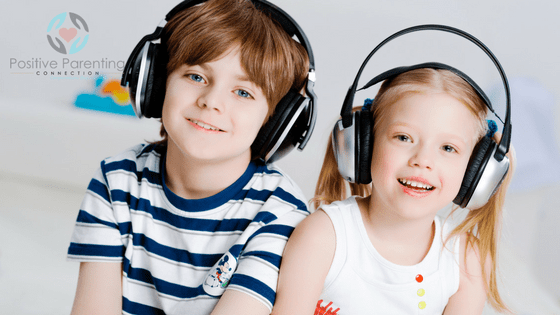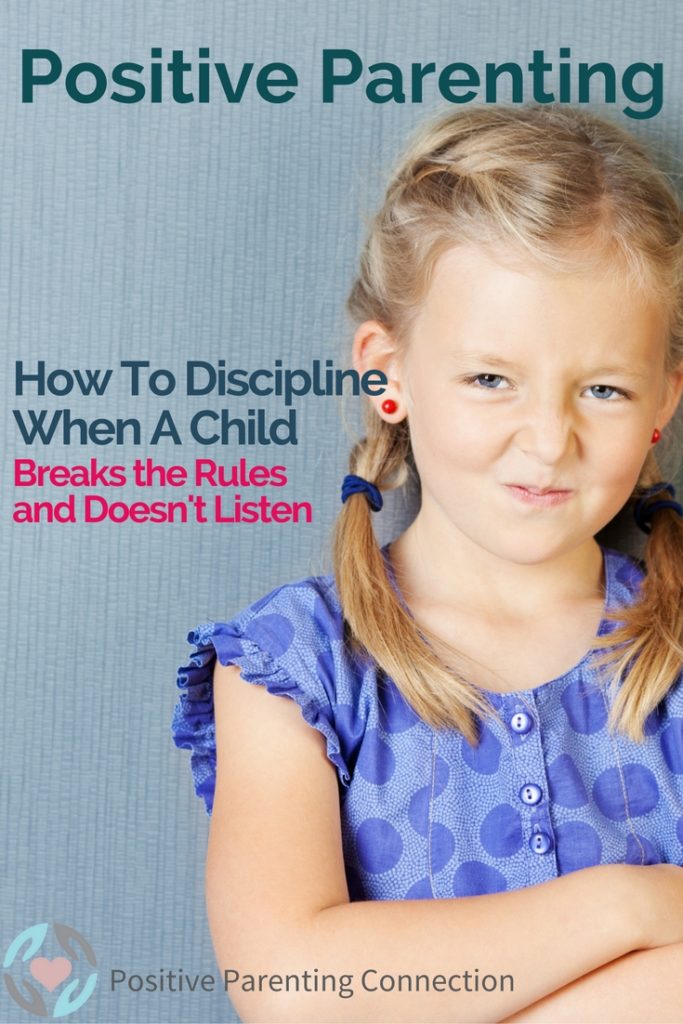Explain What You Would Do if a Child Continues to Break a Safety Rule
You broke your own rule mama! You used the car as a closet! Said my daughter beyond excited to have noticed my forgotten coat, wrinkled and abandoned in the freezing cold car.You are right. And I am so glad you noticed and told me. I offered with a smile. I will be sure to take it inside next time. I said to her.
Mom! It's a no biggie! Can I have a piggyback ride when we arrive? Oh andI bet you will do better next time. She added with a silly, silly smile.
As my daughter had playfully explained that my forgotten coat was not a big deal, I could hear my words coming through.The very words I strive to use when small mistakes happen and just a hint of guidance will do the trick.
But what about when Children break the rules and don't listen? Positive Discipline can help.
Children sometimes break rules or don't listen. Sometimes we realize it's just a mistake, like my daughter's playful imitation of a "no biggie". Other times, we are certain the rule breaking or not listening is misbehavior, or even defiance in need of discipline.
A common response in these cases is to search for the best discipline – but what is best isn't always clear. Just that something should be done… because children "should not get away with breaking the rules!" and "Children need to learn the consequences of their actions."as parents recently shared with me in a workshop.
Whatever the response, helping children learn, to accept responsiblity or the value of listening to our guidance is usually the goal. And for that reason, not choosing a punitive approach is important. So that the child will NOT end up feeling worried, confused and misunderstood. Disconnected from the very person that is supposed to offer safety and guidance.
Guidance Instead Of Punishment
Punishments for breaking rules can lead to a child retaliating or withdrawing (Jane Nelsen, Positive Discipline Series). What does that look like? It might be a child refusing to eat, delaying bedtime, talking back or otherwise behaving in ways that invite negative attention. Mistakenly we sometimes perpetuate the "not listening/ not cooperating" behaviors precisely because of how we are trying to stop them in the first place. But two negatives when it comes to children and listening is not likely to equal a positive outcome.
There is magic, and sound reasoning, in taking a calm, kind, inquisitive and understanding approach to helping children when they break rules or don't listen.
Because a guidance approach opens the door for working together. It creates trust and invites cooperation. It offers children a chance to understand themselves and others. To reflect on their choices and decisions. It gives you an opportunity to be seen as a safe and trusted source of meaningful information.
My daughter's playful copycat moment was a powerful reminder of just how much words really imprint and impact our children. If we choose to encourage and help when the stakes are low, we have a better chance of getting through when the stakes are high.
These Rules Were Made For Breaking (not quite…)
Having rules is important. Particularly rules that keep children safe. Adjusting rules to reflect your family values and needs is wise. Knowing your child will test, push and probably break some of these rules is also wise.
Testing limits is a way of testing independence, and that's a good thing, even if it makes us want to stick a fork in our heads. It's exhausting, yes, but it's a necessary part of creating independent kids. – Jessica Lahey, The Gift of Failure: How the Best Parents Learn to Let Go So Their Children Can Succeed
Striving to help and guide your child (instead of punishing) when the rules are broken is even wiser. Because it gives children a blue print for solving problems, learning responsibility and it flexes their failure and resiliency muscles.
Focusing on understanding mistakes and misbehavior, instead controlling or punishing preserves trust and encourages capability. It also cultivates a cooperative "working with" dynamic that you can use from the toddler years and beyond.
Discipline really is more effective when it focuses on teaching, understanding and guiding the child, instead of trying to make the child feel bad.
What To Do When Your Child Breaks the Rules & Doesn't Listen To You

- No Biggies: If your child breaks a rule that is small, and it's really just a mistake or oversight, calmly let them know it's a "no biggie" moment. Follow up with any missing information they may need to not do it again.
- Involve and Listen : Ask if your child has ideas how to fix her own mistake. With time, your child may start doing this on her own. (Read an example of a child learning to take responsibility for a big mistake here.)
- Do Over: Notice an unhelpful behavior? Let your child start over or have a second chance. It might sound like "Can you show me a way to pet the dog that is gentle and kind?"
- Stop The Behavior & Listen To the Feelings: When you notice your child is behaving in a way that is unhelpful and unnecessary calmly step in to stop the behavior. Then follow up with an opportunity for the child to connect with you and express himself. It might sound like "I will not let you hit your brother!" Step between the two children. "I'm here for you. Can you tell me what is going on?" When we listen to the feelings, we help children learn to self-regulate and make better choices as they grow.
- Help WITH vs. doing for: You can offer your child help fixing, cleaning up or mending when needed. A doing "with" instead of "fixing for" attitude helps transform misbehavior into a teachable moment. Your child can walk away with a sense that not only is she expected to fix her mistakes, that she is capable of doing so as well.
- Say NO & Yes when you mean it:Set and keep limits that are clear so your child understands what you really expect.
- Respect & Encourage: Speak to your child with the same respect and consideration that you hope to hear when she speaks to you, her family, friends and teachers.
- Teach then Trust: Strive not to lecture or dwell on the broken rules ( You may need to vent to a friend or write it down to let it go). Aim to teach and then move forward, trusting that your child is learning to follow your guidance.
What if a child keeps breaking the same rules over and over again?
- Jane Nelsen, author of the Positive Discipline Series suggests "Take time for training" meaning, be sure your child has had enough time with you to practice and learn what is expected.
- Reflect and reduce the number of rules. Too many rules becomes controlling and constricting. And most children will become quite creative (i.e. lying, breaking more rules) just to not get caught.
- Reflect if there is a need to adjust expectations and surroundings (house proof, supervise, explain differently) to match your child's age and development.
Focus on connection: Is your child getting plenty of unconditional and positive attention from you?

Do you make time to be with your child, to play games, listen to dreams, thoughts and wishes? Do you create special moments together? Do you look at your child with love, kindness and care? Do you forgive and even expect imperfections?
Because loving a person means seeing him, really seeing him, above the distractions, the chaos, the mess, and the imperfections. -Rachel Macy Stafford, Hands Free Mama
The more your child feels welcomed, understood and encouraged the more she is likely to follow your guidance. You don't have to be perfect, and you don't have to come up with complicated behavior charts or schemes either. Simply having a willingness to invest in your relationship, in these early years really makes a huge difference.

You haven't failed if your child has been testing limits and pushing boundaries.
As you help your child grow, you will have many opportunities to say no, explain rules again (and again), listen to tears, frustrations and fears. Offer hugs, look for the "doing with moments" allow second chances. Pause, involve, remember your child is capable and willing to learn from you.
Peace & Be Well,
Ariadne
Related Reading:
- Just starting out with Positive Parenting? Join our classroom for the Mission Cooperation Course, a comprehensive positive discipline based online class that promotes better listening and cooperation at home.
-

- Not convinced about the positive approach? Check out Is this what causes so many kids to be brats? by Alissa Marquess of Creative with Kids.
- If you are feeling disconnected from your child, Andrea Nair has very helpful suggestions in How to Do Parent Child Relationship Repair
The following two tabs change content below.
- Bio
- Latest Posts
Ariadne is a happy and busy mama to three children. She practices peaceful, playful, responsive parenting and is passionate about all things parenting and chocolate. Ariadne has a Masters in Psychology and is a certified Positive Discipline Parenting Educator. She lives on top of a beautiful mountain with her family, and one cuddly dog.
Source: https://www.positiveparentingconnection.net/how-to-discipline-a-child-that-breaks-the-rules-and-doesnt-listen/
0 Response to "Explain What You Would Do if a Child Continues to Break a Safety Rule"
Post a Comment